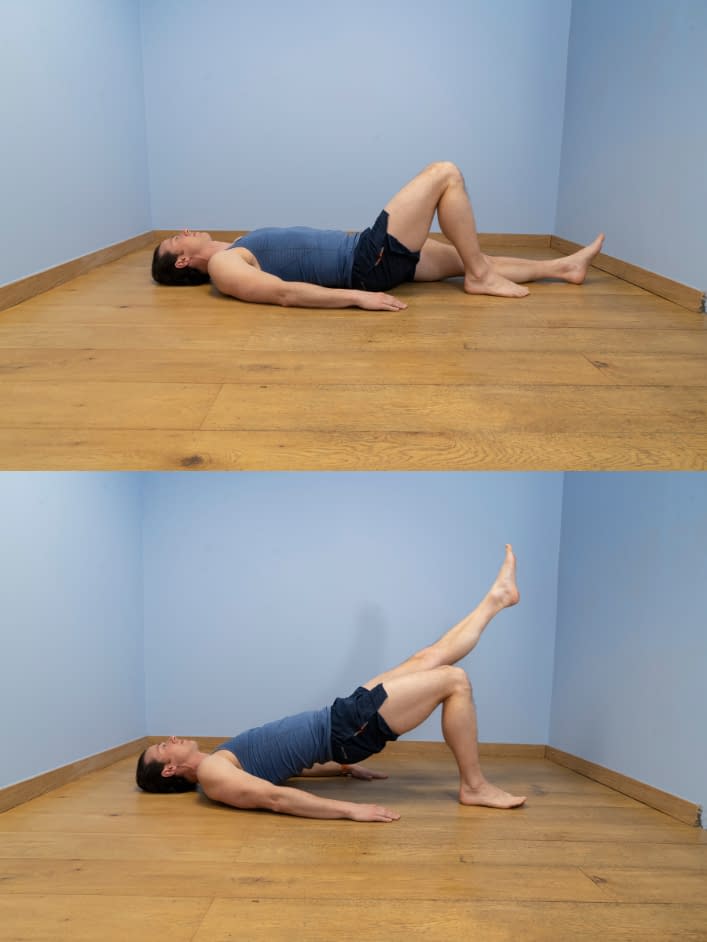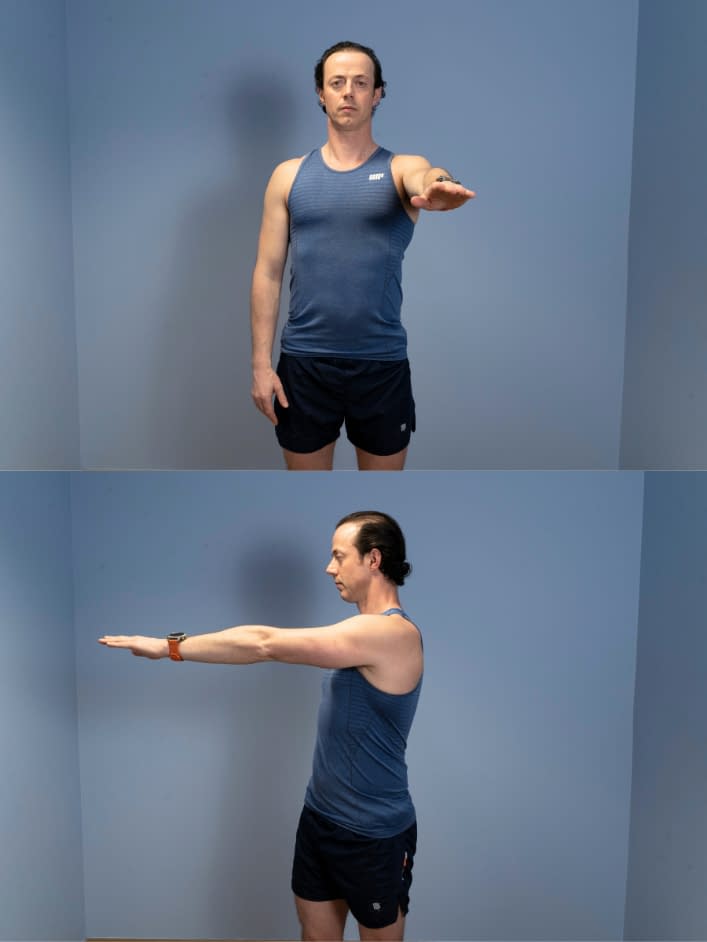Sacroiliac Joint Dysfunction Intermediate Exercise Programme
Aim to perform this programme a minimum of once per day unless prescribed otherwise. As with any new exercise, start slowly (repetitions as able) and build up as you are able within the guidelines below.
Pain should not exceed 4/10 whilst completing this exercise programme.
1. Dead bugs
- Lie on your back with your arms straight up pointing to the ceiling, and your knees raised level with hips, knees bent to 90 degrees.
- Lower one leg out to straight, and the alternate arm.
- Then lift back up and lower the other leg and arm.
- Breathe in as you lower, breathe out as you bring back up.
2. Bridge with leg lift
- Lie on your back on the floor or bed with your knees bent at 90 degrees, your feet on the floor and your arms down by your side.
- Push your heels down into the floor to gently lift your hips upwards. Lift as high as you feel comfortable but no higher than a straight line between hips, knees and shoulders.
- If you feel discomfort, then try squeezing your tummy and bum muscles before starting the lift.
- From this position lift one leg slightly off the floor and return.
- Repeat on the opposite side.
- Try and keep the pelvis still.
3. Standing rotation
- Start standing upright.
- Take your right arm up to shoulder height and out to the side.
- From here, reach across your body as far as you can until you are level with your left shoulder.
- You can move your upper body and pelvis but keep your feet on the floor.
- Repeat this motion using the left arm and then continue alternating between the left and the right arms.
We recommend consulting a musculoskeletal physiotherapist to ensure exercises are best suited to your recovery. If you are carrying out an exercise regime without consulting a healthcare professional, you do so at your own risk. If you have any concerns whilst completing these exercises, please contact a healthcare professional.
More Plans
Exercises at this stage aim to reduce the stress on the joint, increase muscle flexibility and movement around the area. This should not exceed any more than 4/10 on your perceived pain scale.
- 0
- 1
- 2
- 3
- 4
- 5
- 6
- 7
- 8
- 910
The advanced stage aims to further increase stability and core strength to ensure a full return to normal daily activities and reduce the risk of recurrence of the problem. This should not exceed any more than 4/10 on your perceived pain scale.
- 0
- 1
- 2
- 3
- 4
- 5
- 6
- 7
- 8
- 910


